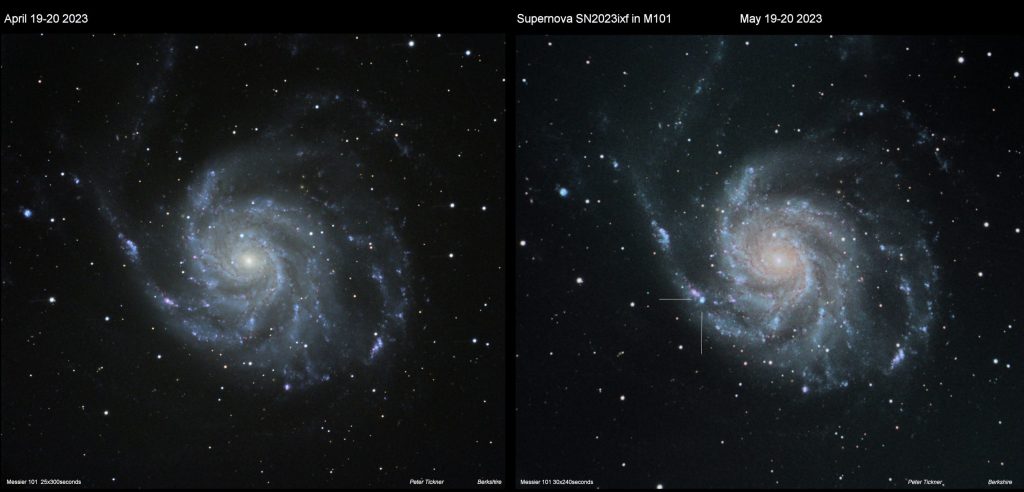A recent supernova event has taken place in the galaxy M101, captivating astronomers and the general public alike. This galaxy, also known as the Pinwheel Galaxy, is a large spiral galaxy located approximately 21 million light-years away from Earth.

Supernovae are powerful stellar explosions that occur when massive stars reach the end of their lives. These cosmic events release an enormous amount of energy and shine with extreme brightness, outshining billions of stars in their host galaxies. Recently, astronomers observed a remarkable supernova in M101, which marked the explosive demise of a massive star. This supernova, classified as a Type II supernova, resulted from the collapse and subsequent explosion of the star.
The explosion of a supernova releases an immense amount of energy, equivalent to hundreds of millions of nuclear bombs. This cataclysmic event causes the star to undergo a transformative process, forever altering its composition. By studying supernovae, scientists gain valuable insights into the life cycle of stars and the creation and distribution of elements in the universe.
The supernova in M101 provided a rare opportunity for astronomers to analyze the remnants of the explosion and observe the subsequent evolution of the galaxy. It also showcased the accessibility and excitement of astronomical discoveries, as amateur astronomers were able to witness the supernova using backyard telescopes.
Unfortunately, some individuals, including myself, were unable to witness the supernova due to unfavorable weather conditions. Nonetheless, the supernova in M101 serves as a captivating reminder of the vastness and transformative power of the universe. It offers us a glimpse into the dynamic nature of galaxies and the awe-inspiring life cycles of stars.

Overall, the supernova in M101 serves as a captivating reminder of the grandeur and transformative power of the universe, offering a glimpse into the dynamic nature of galaxies and the life cycles of stars.
Post a comment
| Date | Name | Comment |
|---|